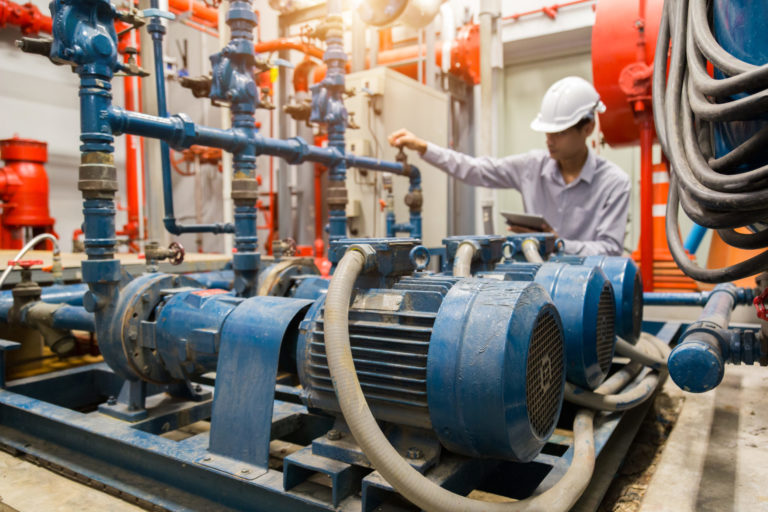Office Hours
Mon - Fri: 8:00 am - 5:00 pm Closed on Weekends
Toll Free
1-800-850-3440
Locations
Youngstown, OH, Cleveland, OH & Pittsburgh, PA
Office Hours
Mon - Fri: 8:00 am - 5:00 pm Closed on Weekends
Toll Free
1-800-850-3440
Locations
Youngstown, OH, Cleveland, OH & Pittsburgh, PA

In today’s advanced manufacturing and processing environments, compressed air systems are indispensable. Often referred to as the “fourth utility,” compressed air powers tools, machinery, automation systems, and even supports critical processes in industries such as food and beverage, pharmaceuticals, and automotive manufacturing. However, the effectiveness of a compressed air system largely depends on how well it is integrated into the facility’s initial design.
For engineers tasked with facility planning and system design, considering the integration of compressed air systems from the outset is crucial. Proper integration enhances efficiency, reduces costs, and ensures long-term reliability. Here are three key considerations to guide the integration process: system integration, space planning, and mechanical compatibility.
Integrating a compressed air system is not just about selecting a compressor and plugging it in. It involves a holistic approach to how the system will operate within the broader facility infrastructure. To ensure long-term efficiency and reliability, engineers must consider several foundational elements:
Start with a detailed demand analysis to establish the foundation of your system design:
Understanding these usage patterns enables engineers to specify the correct system size, avoiding costly inefficiencies from oversizing and performance issues from undersizing. A well-matched system ensures energy-efficient operation and supports process reliability.
Modern compressed air systems often include advanced control panels and monitoring systems that play a key role in overall system integration. These should be designed to interface seamlessly with a facility’s Building Management System (BMS) or Supervisory Control and Data Acquisition (SCADA) platform. Integration allows for:
It’s essential to ensure that communication protocols between the air system and the existing facility controls are compatible. This connectivity provides better visibility, improved energy management, and reduced downtime.
As facilities grow and evolve, so do their compressed air requirements. Planning for redundancy and expansion from the outset ensures flexibility and resilience:
A scalable, resilient compressed air system enables facilities to adapt quickly to production changes while maintaining operational continuity.
Proper spatial design ensures that compressed air systems perform efficiently, are easy to maintain, and meet safety requirements. Space planning should focus on layout, environmental controls, and operational access.
Compressors generate heat, and that heat must be managed. Engineers should evaluate:
Noise from compressors can affect worker safety and comfort. Consider:
Ensure that all system components—including filters, dryers, and drain valves—are easily accessible for inspection, maintenance, and service. Crowded or poorly planned layouts can increase downtime and pose safety hazards. Also, account for egress routes, emergency shutoff access, and service clearances as required by local codes and manufacturer recommendations.
Compressed air systems must work in harmony with other building systems. Poor coordination can cause inefficiencies, create safety hazards, or complicate future upgrades.
Select materials that align with the facility’s standards and the compressor’s output conditions. Key considerations include:
Compressed air naturally contains moisture that must be removed to protect equipment and maintain product integrity:
Coordinate closely with plumbing, HVAC, and electrical teams to ensure the system doesn’t interfere with—or place excess demand on—other utilities. For example:
Integrating compressed air systems during the facility design phase is not just a technical necessity—it’s a strategic opportunity. By addressing demand analysis, spatial planning, and mechanical compatibility early on, engineers can deliver systems that are efficient, scalable, and built for longevity.
At Dearing Compressor and Pump Co., we specialize in helping engineers and project teams design compressed air and pump systems that work in harmony with their facilities. From design consultation to equipment selection and commissioning, our experts are here to ensure your system supports your operation today—and well into the future.
Mon - Fri: 8:00 am - 5:00 pm
Closed on Weekends
Toll Free
1-800-850-3440
Youngstown, OH, Cleveland OH, & Pittsburgh, OH